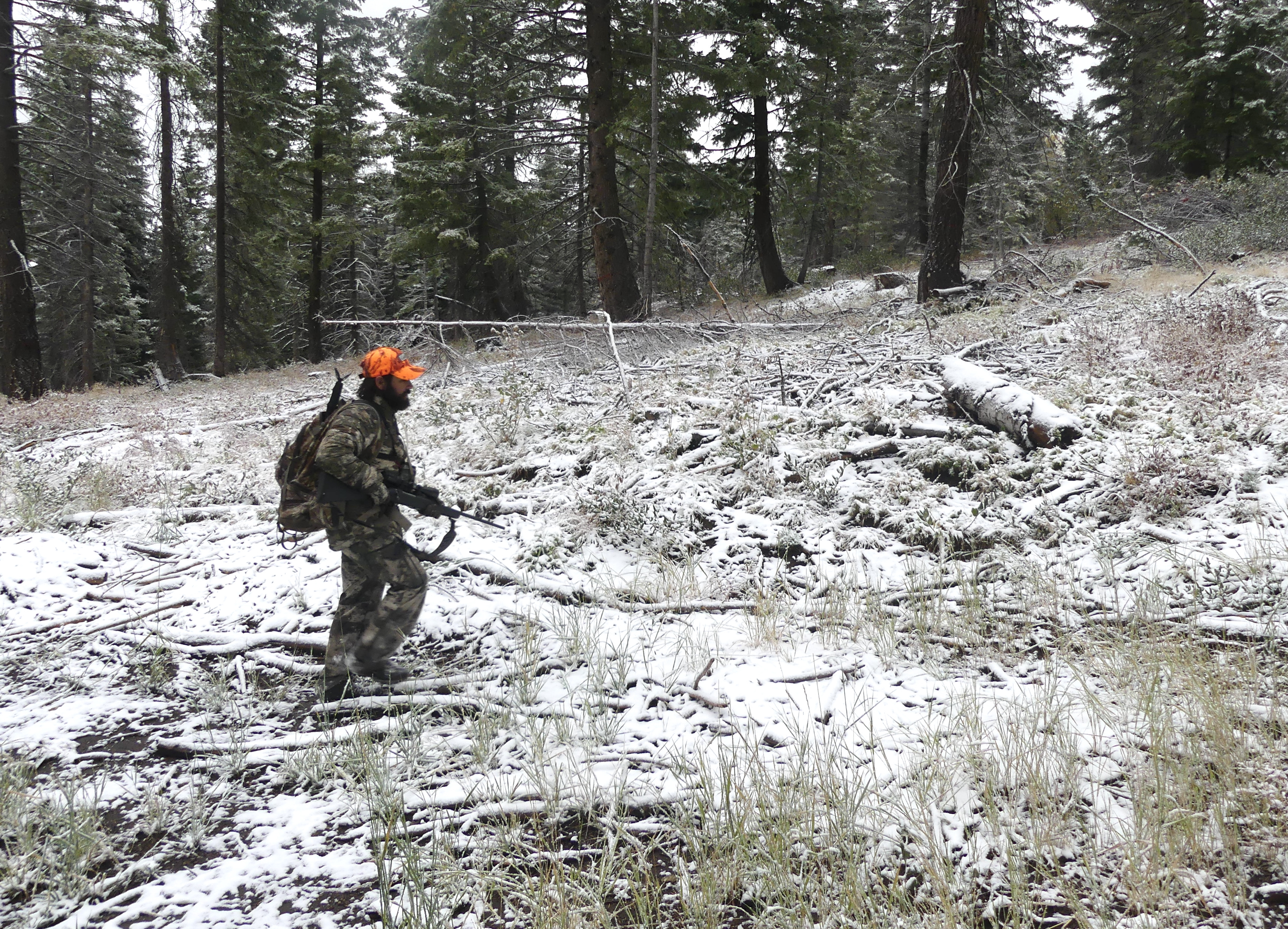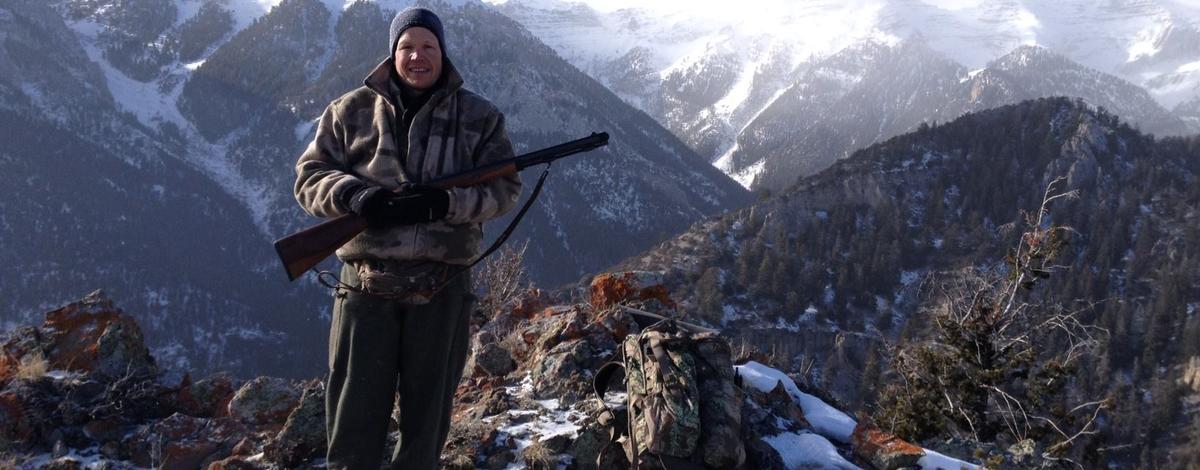Fall hunting happens in all kinds of weather and conditions, so don’t underestimate the importance of your clothing. It may determine how long you’re able to stay outdoors and hunt, and more time in the woods often equates to a higher chance of success. Dressing for Idaho's variable fall weather takes preparation and investment, but it can pay dividends.

Hunting is often better when the weather is cold, wet and snowy, and finding clothes that keep you comfortable can be a challenge, so here are things to consider:
Start with your base layer
That basically means your long underwear. You want it warm, breathable and comfortable, even when damp. You will hear often, but it bears repeating – avoid anything cotton – which is saps warmth from your body when it’s wet.
You want base layers made from wool or synthetic fabrics that wick moisture (sweat) away from your body and retain heat when damp or wet. There are many weights (thicknesses) on the market, but a good rule of thumb is unless you’re going to be hunting in extremely cold weather, sitting sedentary (such as in a tree stand or a blind) go with lightweight or a midweight base layer.
You can easily overheat in heavy long underwear, especially when you’re hiking, even if you're just hiking to and from your blind or stand.
Also remember you're unlikely to remove your base layer when you're hunting, so it should be comfortable in a wide range of temperatures and you can easily add more layers for additional warmth and weather protection.
A quality base layer is also very versatile because it can be worn for a variety of outdoor activities, and it tends to be very durable, so don't go cheap on this part of your hunting attire.
Be prepared to add or remove layers
You will probably add additional layers that provide warmth and weather protection as needed, or shed them mid day to adapt to changing conditions.
Remember it's common in Idaho for big temperature swings during the day, even when there's no precipitation, so what you're wearing in the morning may be too warm by afternoon. Or it could be the opposite. A mild morning or sunny afternoon can turn frigid when the sun goes down, or if a storm or cold front moves through. Daily temperature changes of 30-40 degrees are common, especially at higher elevations.
Unless it's dead of winter and you plan to sit sedentary all day, you will want to avoid a big, bulky parka because your only option is to wear it or take it off, and you will want to adjust your layers on the go when temperatures change.
A fleece sweater or sweatshirt is a good second layer to keep your torso warm. Depending on temperatures, you may need another insulating layer, such as a vest, insulated coat or fleece jacket. Your outer layer should provide protection from wind, rain and snow, and also be fairly packable so you can easily take it off and stash it in your pack if you start to overheat.
Hunting season is a good time to ditch the jeans you've been wearing all year and go with hunting pants, preferably ones that are water resistant and fast drying because there will often be dew or frost in the mornings that will dampen your pants and can make you cold later in the day.
If you plan to hunt all day, think about what clothes you want available so you can adapt any conditions.
Waterproof vs. water resistant
Deciding which to choose depends on your local climate. If you’re hunting northern Idaho where it’s frequently raining, waterproof is probably the best way to go. But if you’re hunting in a drier climate, such as southern Idaho, you might be more comfortable with something water resistant.
It’s a balancing act because waterproof fabrics are typically less breathable, or don't breathe at all, so moisture can accumulate inside and make you feel damp and chilly. Water resistant clothing tends to breathe better, so it wicks moisture away from your body, and you can avoid dampness. But if you’re in a prolonged rainstorm, you will get wet, which is almost always uncomfortable. Many hunters opt toward weather resistant clothing that is more breathable, but also pack have a lightweight and fully waterproof outer layer that they can wear during a downpour.
You will be pleasantly surprised how much weather you can endure and remain comfortable in if you have a quality base layer, a warm and insulated mid layer, and a water resistant or waterproof outer layer.
Keep your core warm
Your torso is the most critical thing to keep warm, and often adding an insulated vest is all you need if you feel chilled. It's also a very versatile piece of clothing because it's quick to put on and take off, packs away easily without taking up too much space and can provide added protection from wind, rain and snow.
Don’t forget your extremities
If any part of your body feels cold, it affects how you feel overall. Your head loses a lot of heat, and adding or removing an insulated cap or beanie is an easy way to warm up if you’re a little chilly, or cool off if you overheat. Keeping your head dry will also make it easier to stay warm and comfortable if it’s raining or snowing. Ditto for gloves. If your hands are wet and/or cold, you're going to be uncomfortable.
Experiment and adapt
Everyone's body is a little different, and body size matters in regard to keeping warm, so there’s no perfect hunting wardrobe for everyone and every weather condition. But try to buy versatile hunting clothes and mix and match them to suit the conditions.

